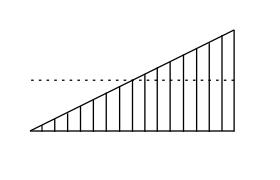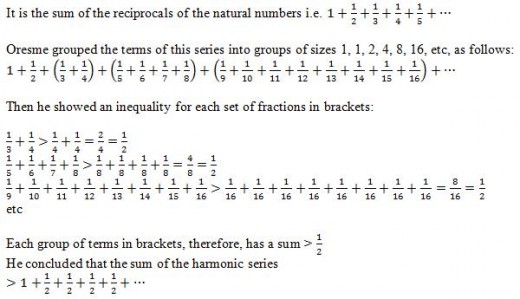Nicole Oresme
Nicole Oresme, who was born in Normandy, France in about 1323, was the foremost mathematician of the fourteenth century. In a century that saw one third of the population of Europe die from the plague known as the Black Death, and the century that saw the beginning of the Hundred Years’ War, there were not many opportunities for creativity; but Oresme was an exception. Besides being a college professor, Oresme later became a bishop in the Church.
Oresme wrote five mathematical works and also translated some of the works of Aristotle.
His works show an originality that was unsurpassed since the days of the Greeks, and contain many ideas that foreshadowed those of later famous mathematicians including Cardano, Descartes, Galileo, and Johann Bernoulli.
In one of his tracts, De Proportionibus Proportionum (c 1360) Oresme was the first to use fractional exponents and also gave rules for combining proportions that are equivalent to the laws of exponents we use today, such as xm´ xn = xm+n and (xm)n = xmn. He even hinted at the possibility of irrational proportions. In a second work called Algorismus Proportionum he used a special notation for fractional powers and applied the rules of proportion to geometrical problems.
Oresme’s most significant contribution to mathematics was a tract called Tractatus de figuratione potentiarum (c 1361), in which he used a form of coordinate geometry to show (in modern terminology) the graphical representation of a function, foreshadowing Descartes by nearly three hundred years. (Descartes was probably influenced by this work of Oresme when he applied the ideas, combined with algebraic symbolism.)

For example, in the above diagram Oresme drew a velocity-time graph for an object starting from rest and moving with constant acceleration. Along a horizontal axis (which he called longitudo) he marked points representing instants of time. For each instant he drew a perpendicular line (which he called latitudo). The above diagram has sixteen latitudo.
Oresme observed that the velocity half way through the time period (dotted line) was equal to half the final velocity, and that the distance covered in the second half of the time period was three times the distance covered in the second half of the time period.
So Oresme not only foreshadowed Descartes, but also gave hints of Galileo’s law for a falling body
Oresme died in 1382.
..
A contribution of Oresme to mathematics
Another of Oresme’s works was his Quaestiones super Geometriam Euclidis (c1350) in which he effectively gave a proof that the harmonic series diverges to infinity. He did not use modern algebraic notation, but what follows is the gist of Oresme’s argument.
First of all, what is the harmonic series?

Since there are an infinite number of brackets, there will be an infinite number of halves, and so the series diverges (gets bigger and bigger as you add more and more terms) to infinity.
Oresme’s proof was given two hundred years before that of Cardano, and more than three hundred years before that of Johann Bernoulli.



